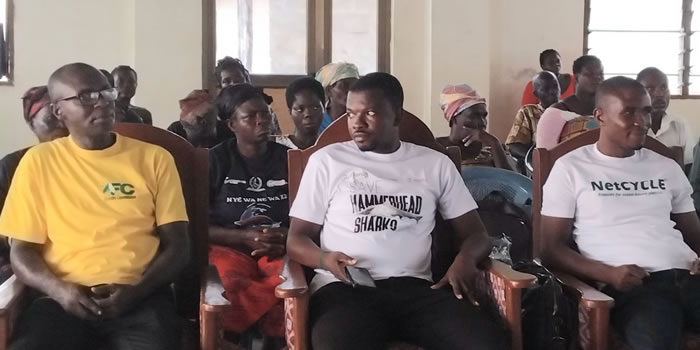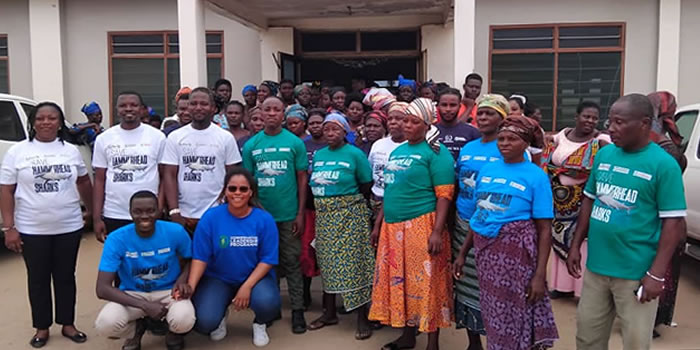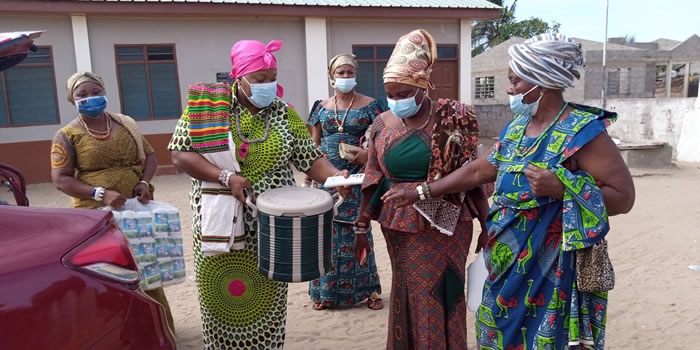

District Economy
Agriculture
Agriculture plays important roles in the socio-economic development of Ghana. It contributes to insuring food security, provides raw materials for local industries, generates foreign exchange, and provide employment and incomes for most of the population (especially those living in the rural areas), thereby contributing to poverty reduction.
Crop Production
With regards to Ada East District, agriculture forms the mainstay of the economy and employs over 60 per cent of total labour force in the district. Again, agriculture is the leading sector in the district economy. This is through the activities of direct farming, distribution and marketing of farm produce and other services. It forms the basis of successful operation of the two (2) thriving markets in the district. The main agricultural activities considered here include farming (crop production), fishing, livestock production and Agro-forestry.
Majority, over 40 per cent of the total labour force which falls under the agricultural sector are basically farmers with the rest being fishermen, livestock producers and Agro-foresters. The Agro-forestry subsector of the agriculture sector is quite negligible since majority of the farmers do not have the necessary dexterity to engage successfully in the sector. The District is quite noted for the cultivation of food crops especially vegetables and to a large extent enjoys a comparative advantage in its production. Among the crops produced in the district include: cassava, maize, legumes, tomatoes, watermelon, pepper, okra, onions, carrot and recently green pepper.
Over the years, there has been several problems bedevilling the agriculture sector. Some of the major constraints hindering a swift growth of the agriculture sector include low crop yield and output due to low soil fertility and over-dependency on rainfall; unsustainable agriculture practices; limited number of extension services; low agricultural mechanization; low exploitation of groundwater for irrigation purposes due to lack of irrigational inputs; Incidence of limited value addition and high post-harvest losses as well as limited access to marketing centres due to poor road network. The table below presents the production figures of the major crops cultivated within the plan-period – 2013-2016.
An agricultural related research by SEND GHANA, a Non-Governmental Organization in the Ada East District revealed that, close to 40 per cent of smallholder farmers in the district has access to irrigational facilities on their farms. Again, it has been researched that, only 30 per cent of smallholder farmers in the district receive extension services.
All these constraints as well as challenges facing agricultural development present a complex analysis of issues for the district to strategically deal with. The socio-economic livelihood systems of majority of the people depend largely on farming thus crop production. Therefore, a breakdown in this endeavour caused through the multiplicity of factors aforementioned will present a greater challenge with respect to the socio-economic well-being of the people.
Livestock Production
Concerning livestock production, there are wide ranges of cattle rearing, sheep and goat keeping, pig rearing as well as the rearing of poultry, turkeys, ducks and guinea fowls in the district. The main challenge confronting livestock development has to do with the issue of grazing land. What has become paramount of the process is the persistent destruction of crops by livestock in the district. This has perpetrated conflict and sometimes unwarranted clashes between livestock owners and farmers due to the latter alleges that the former is deliberately refusing to perform an expected oversight function of the animals. In real rural communities, drinking systems have been extensively sabotaged by livestock making it almost unsuitable for domestic usage.
Through this, the district has made strenuous efforts to provided potable water to almost 67 per cent of rural communities in the district. Currently, the district is making further efforts to get a lot more communities potable water in order to wean them off this perennial challenge of water source destruction. As a measure, it has mitigated the problems stated above and subsequently enhanced livestock production.
Besides all these however, the district is still making frantic efforts to intensify diseases surveillance systems by increasing the number of Veterinary officers as well as making strenuous efforts to provide sustainable drinking sources such as dug-out and dams for the purposes of livestock production and development.
Fishing Industry
The fishing industry is basically characterized by marine and inland fishing activities. This is because the district shares boundaries with the Gulf of Guinea to south and has a coastal line of about 19 kilometres stretching from Kewunor to Totope. The culture based fisheries is scattered throughout the district and mostly on the islands. Table 1.17 below presents the typology of fish as well as Landing Beaches in the District.
Within the period of 2014, total fish catch was 273.06mt as against 305.19mt in the 2015. The fishing industry needs a great overhaul particularly with the focus of making the industry more vibrant with all the necessary technological inputs and practical guidance. The main challenge of the fishing industry in district is the lack of fishing inputs and inadequate capacities in terms of the needed modern technology to boost the harvesting of fish.
The Ministry of Fisheries and Aquaculture is confronted with inadequate scientific data for precautionary approach to fisheries management; lack of co-management mechanisms for fisheries resources management; inadequate control of fishing effort; inadequate efforts to enhance fisheries resources of water bodies and poor effective monitoring, control and surveillance (MCS) system to ensure compliance with laws and regulations on fisheries.
All these complexities have embodied the fishing industry and are working strongly against the efforts and development of industry in the District. The approaches need a crucial ministerial as well as top level solution with participation of local industries (fisher groups, men and women) which are engaged in the fishing sector.
As part of this year’s intervention, critical attempts have been identified to support the fishing sector and most importantly bridge the gap between the domestic and foreign industry. The provision of training and provision of GPS Equipment, Education of Fisherfolks on the Fisheries Law, Confiscation of unauthorized equipment for fishing and Prosecution of offenders emerged as crucial candidates of the solutions to help support the fishing industry. The District has taken up all these important interventions and is currently working arduously towards its implementation.
Irrigation Farming
Agricultural development depends on a host of complementary activities. The development and use of irrigation remains one of the critical elements which enhance growth in agriculture.
The District holds a large potential in agricultural farming. Currently, there are three methods of irrigation being utilized in the district. These methodologies include: Tube Well/Sprinkler, Pump Flood System and Pump Canal System.
Irrigations systems vary with the nature of water sources (surface water or groundwater), the scope of the irrigation programme, the stage at which management interventions are applied and the agent under whose control each part of the irrigation system lies remain the complex issues to deal with. Frequently, an important aspect of irrigation which is neglected is drainage.
Proper management of irrigated water in all parts of the system essential to obtain the full benefit of the investment made. Therefore, prudent management approaches are necessary and will depend on the nature and complexity of the system.
The issues of operation and maintenance of the infrastructure, cost recovery and farmer’s participation still remain an issue to be discussed and incorporated appropriately. Table 1.18 below presents the typologies of irrigation in the district.
Banking
The dynamics of global development have emphasized the need to incorporate the banking sector in development planning approaches. Experience point to the fact that; the availability of innovative and locally tailored banking institutions contributes significantly to the development of any local economy. There are two banks in the district- Ada Rural Bank and Ghana Commercial Bank. Considering the production factors of proximity and time, these banks are woefully inadequate. With respect to the Ghana Commercial Bank, it was initially operating at the District Capital, but, has decided to relocate to Kasseh following a breakdown in the socio-economic systems which formed the basis for establishing the bank.
Besides these banks, efforts are being put in place to open an office of the Micro-Finance and Small-Scale Loan Centre (MASLOC) in order to assist farmers and business persons with small scale loans to enhance production.
Date Created : 11/14/2017 4:37:07 AM












 facebook
facebook
 twitter
twitter
 Youtube
Youtube
 +233 593 831 280
+233 593 831 280 0800 430 430
0800 430 430 GPS: GE-231-4383
GPS: GE-231-4383 info@ghanadistricts.com
info@ghanadistricts.com Box GP1044, Accra, Ghana
Box GP1044, Accra, Ghana